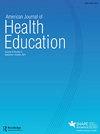美国体育素养研究:学术文献的系统回顾
IF 0.8
Q4 PUBLIC, ENVIRONMENTAL & OCCUPATIONAL HEALTH
引用次数: 3
摘要
背景跨学科领域的研究人员研究身体素质;然而,有人建议在健康教育中对体育素养的评估和报告进行实质性的改变。目的本系统综述概述了a)美国出版的体育识字文献。;b) 现有的美国体育素养研究中所代表的学者、学科和背景;以及c)阐述了过去20年来美国体育素养的发展。方法利用PRISMA-P 2015,36篇稿件符合入选标准。结果健康、教育、活动、学校、发展、生活、能力和知识等概念与体育素养密切相关。大多数被审查的研究都将体育识字结构付诸实践,将体育识字要素应用于各种健康和教育背景,对课程和项目干预措施进行了概述和评估,或在体育识字的定义和理解之间进行了界定。讨论关于物理素养的含义、目的和结果的建设性辩论仍在继续,使未来的研究工作能够通过测试新的循证干预措施来弥合现有的哲学和语用观点。转化为健康教育实践这项研究揭示了知识差距,为认证健康教育专家(CHES)提供了如何在各种教育背景下成功概念化体育素养的信息。AJHE自学测验通过SHAPE美国在线研究所(SAOI)在线为本文提供http://portal.shapeamerica.org/trn-Webinars本文章由计算机程序翻译,如有差异,请以英文原文为准。
Physical Literacy Research in the United States: A Systematic Review of Academic Literature
ABSTRACT Background Researchers within transdisciplinary fields examine physical literacy; however, substantial changes have been suggested regarding the evaluation and reporting of physical literacy within health education. Purpose This systematic review provides an overview of a) physical literacy literature published in the U.S.; b) scholars, disciplines, and contexts represented in available U.S-based physical literacy studies; and c) explicates the progression of physical literacy in the U.S. over the last 20 years. Methods Utilizing the PRISMA-P 2015, 36 manuscripts met the inclusion criteria. Results Concepts such as health, education, activity, school, development, life, competence, and knowledge were strongly related to physical literacy. Most reviewed studies operationalized the physical literacy construct, applied physical literacy elements to various health and educational contexts, provided overviews and assessments of curricula and program interventions, or delineated between definitions and understandings of physical literacy. Discussion Constructive debate continues over the meaning, purpose, and outcomes of physical literacy, allowing future research endeavors to bridge existing philosophical and pragmatic perspectives by testing new evidence-based interventions. Translation to Health Education Practice This study exposes gaps in knowledge to inform Certified Health Education Specialists (CHES) on how to successfully conceptualize physical literacy in various educational contexts. A AJHE Self-Study quiz is online for this article via the SHAPE America Online Institute (SAOI) http://portal.shapeamerica.org/trn-Webinars
求助全文
通过发布文献求助,成功后即可免费获取论文全文。
去求助
来源期刊

American Journal of Health Education
PUBLIC, ENVIRONMENTAL & OCCUPATIONAL HEALTH-
CiteScore
1.70
自引率
10.00%
发文量
36
期刊介绍:
AJHE is sponsored by the American Association for Health Education of the American Alliance for Health, Physical Education, Recreation and Dance. The mission of the American Association for Health Education(AAHE) is to advance the profession by serving health educators and others who strive to promote the health of all people through education and other systematic strategies.AAHE addresses the following priorities •Develop and promulgate standards, resources and services regarding health education to professionals and non-professionals •Foster the development of national research priorities in health education and promotion. Provide mechanisms for the translation and interaction between theory, research and practice.
 求助内容:
求助内容: 应助结果提醒方式:
应助结果提醒方式:


